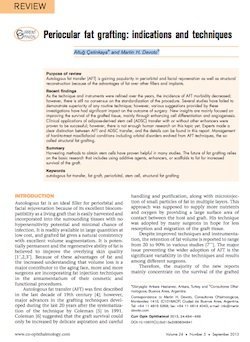 El envejecimiento facial está asociado con el descenso de los tejidos y la pérdida de volumen de grasa.
El envejecimiento facial está asociado con el descenso de los tejidos y la pérdida de volumen de grasa.
Desde hace varios años, crece el interés en el uso de la grasa autóloga como complemento para la cirugía estética.
Este artículo publicado recientemente revisa los últimos trabajos y tendencias sobre este tema.
Purpose of review
Autologous fat transfer (AFT) is gaining popularity in periorbital and facial rejuvenation as well as structural reconstruction because of the advantages of fat over other fillers and implants.
Recent findings
As the technique and instruments were refined over the years, the incidence of AFT morbidity decreased; however, there is still no consensus on the standardization of the procedure. Several studies have failed to demonstrate superiority of any routine technique; however, various suggestions provided by these investigations have had significant impact on the outcome of surgery. New insights are mainly focused on improving the survival of the grafted tissue, mainly through enhancing cell differentiation and angiogenesis. Clinical applications of adipose-derived stem cell (ADSC) transfer with or without other enhancers were proven to be successful; however, there is not enough human research on this topic yet. Experts made a clear distinction between AFT and ADSC transfer, and the details can be found in this report. Management of hard-to-treat maxillofacial conditions including orbital disorders evolved from AFT techniques, the so- called structural fat grafting.
